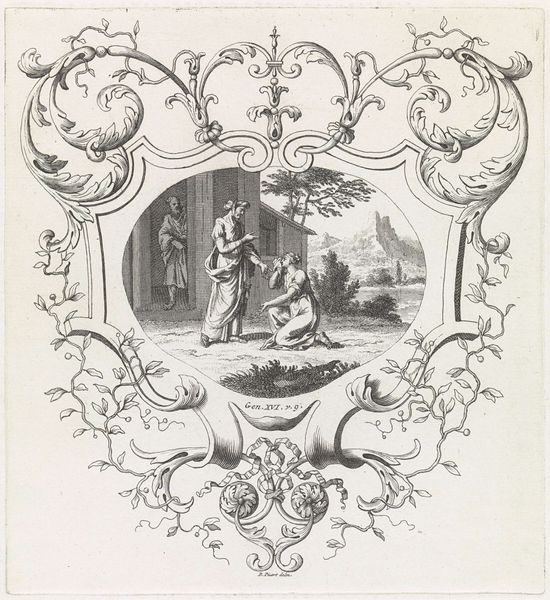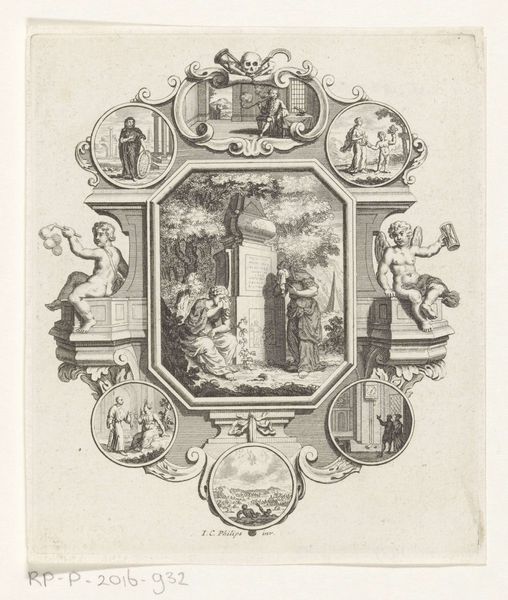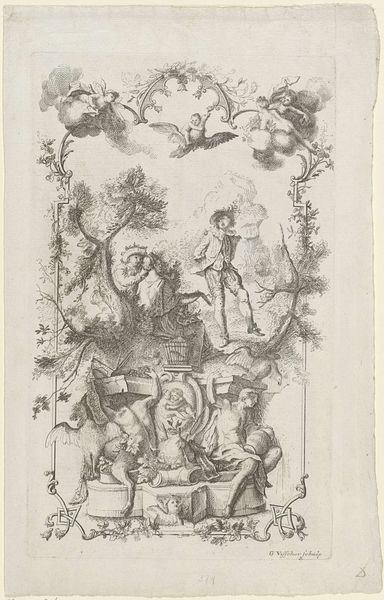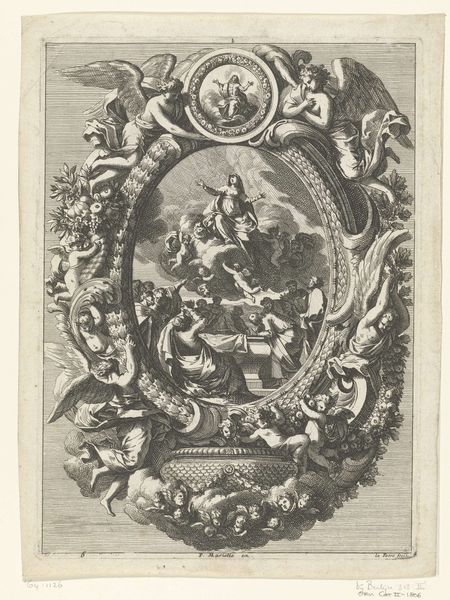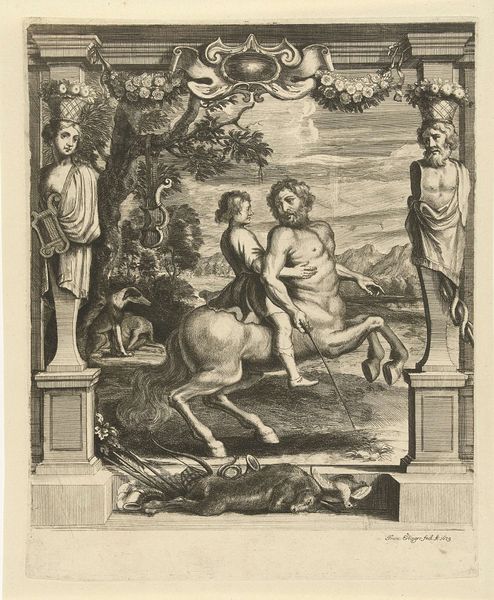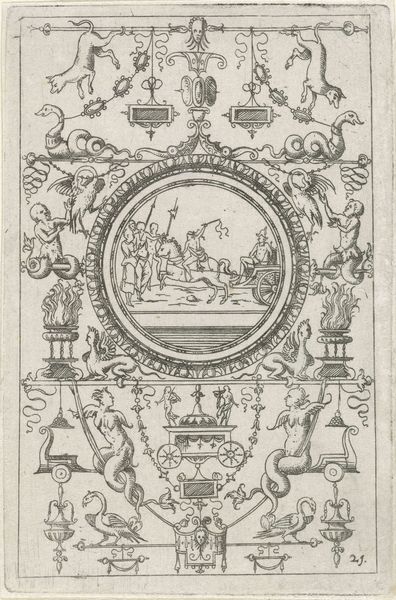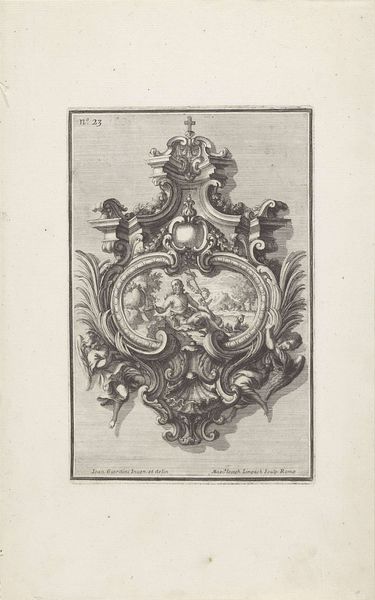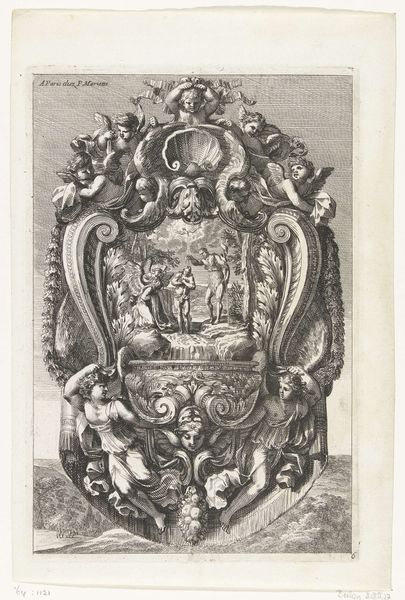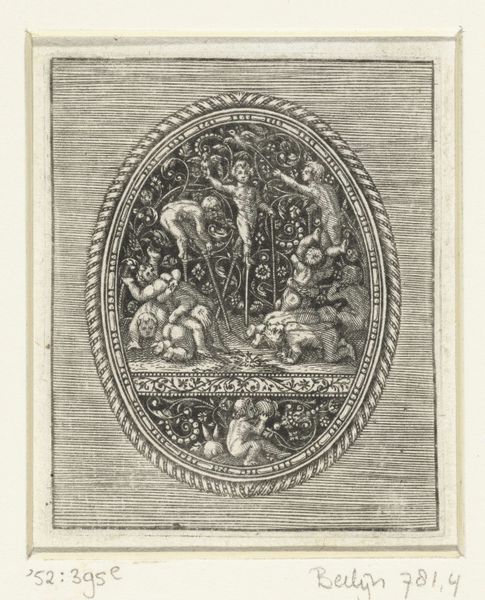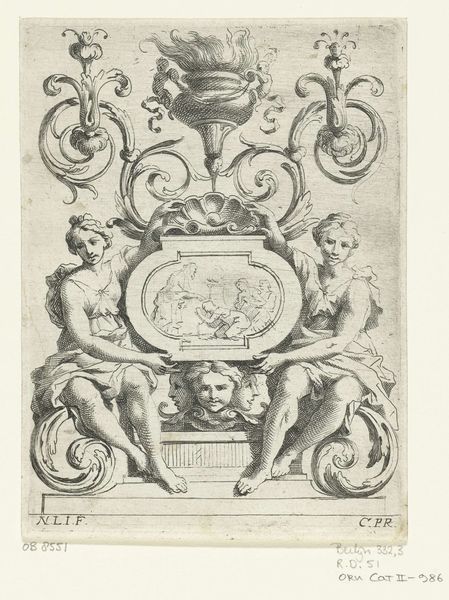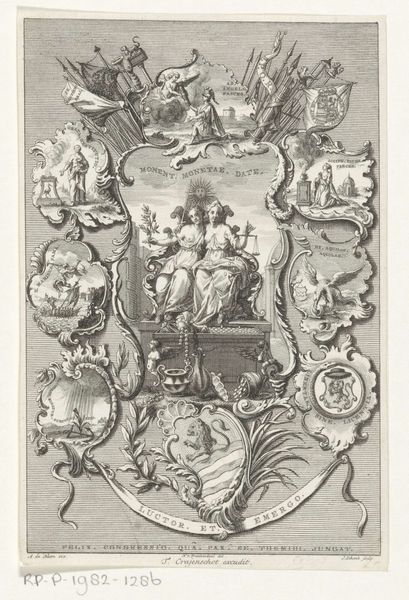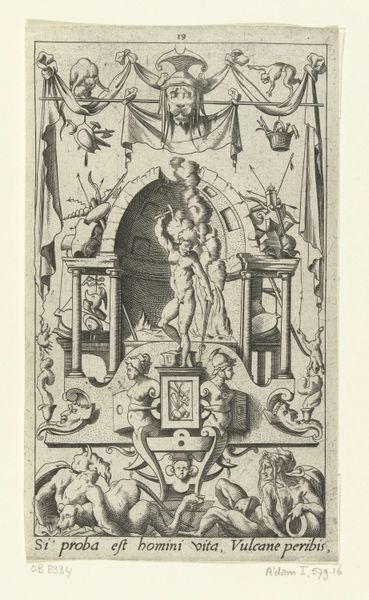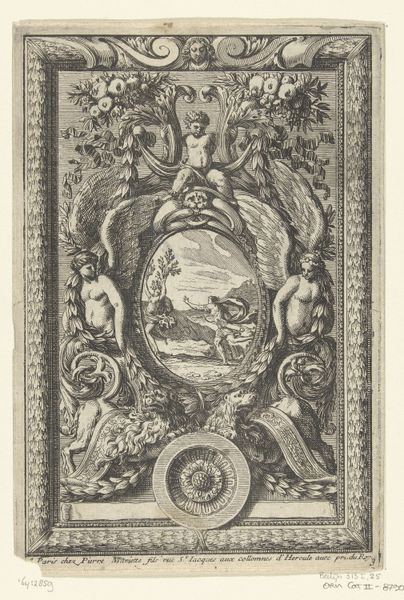
print, engraving
#
allegory
#
baroque
# print
#
landscape
#
figuration
#
engraving
Dimensions: height 298 mm, width 195 mm
Copyright: Rijks Museum: Open Domain
Curator: Immediately, I notice the intense activity of the scene; everything seems to pour and spill over, echoing the abundance often linked with the season of autumn. Editor: We are looking at “Herfst,” or “Autumn” as it translates, an engraving produced between 1714 and 1762 by Jakob Wangner. It’s held in the Rijksmuseum's collection. Curator: What a compelling mix of classical imagery! Look at the Bacchus figure aloft with the cup and grape-laden staff; all traditional emblems of revelry and autumnal bounty. Then note the cornucopia spilling forth! Editor: Yes, there's definitely an interesting Baroque aesthetic at play here, framing the allegorical elements—a combination of mythological figures with symbolic objects like the scales representing Libra and even the snake, which hints perhaps at Scorpio. Curator: The weight given to these symbols speaks to a desire to represent the harvest season beyond mere depictions of fruits or crops. These are very specific associations of astrology tied in, it is fascinating to consider their effect on public perceptions in Wangner’s time. What visual arguments was Wangner forwarding here? Editor: The swirling compositions underscore the intoxicating sensations, suggesting the emotional core connected to harvest time and the transition to shorter days, of feasts before the fasts as some might argue from a sociohistorical lens.. The choice of print medium might indicate a desire to circulate these ideas to a broad public, tying social tradition to visual experience through shared imagery. Curator: Precisely! And by using recognizable allegories, Wangner creates a language for collective memory, making visible the cycles of nature through cultural motifs. There’s an engagement with psychology at play too as Wangner connects imagery and shared societal events with something bigger, something inherent in human memory. Editor: Yes, the piece as a whole transcends the depiction of "autumn" to present how social forces interpret visual and emotional representation to make cultural arguments, to create a language we all innately understand. It’s truly more than just decoration, offering a discourse through symbol, a cultural reflection indeed.
Comments
No comments
Be the first to comment and join the conversation on the ultimate creative platform.
